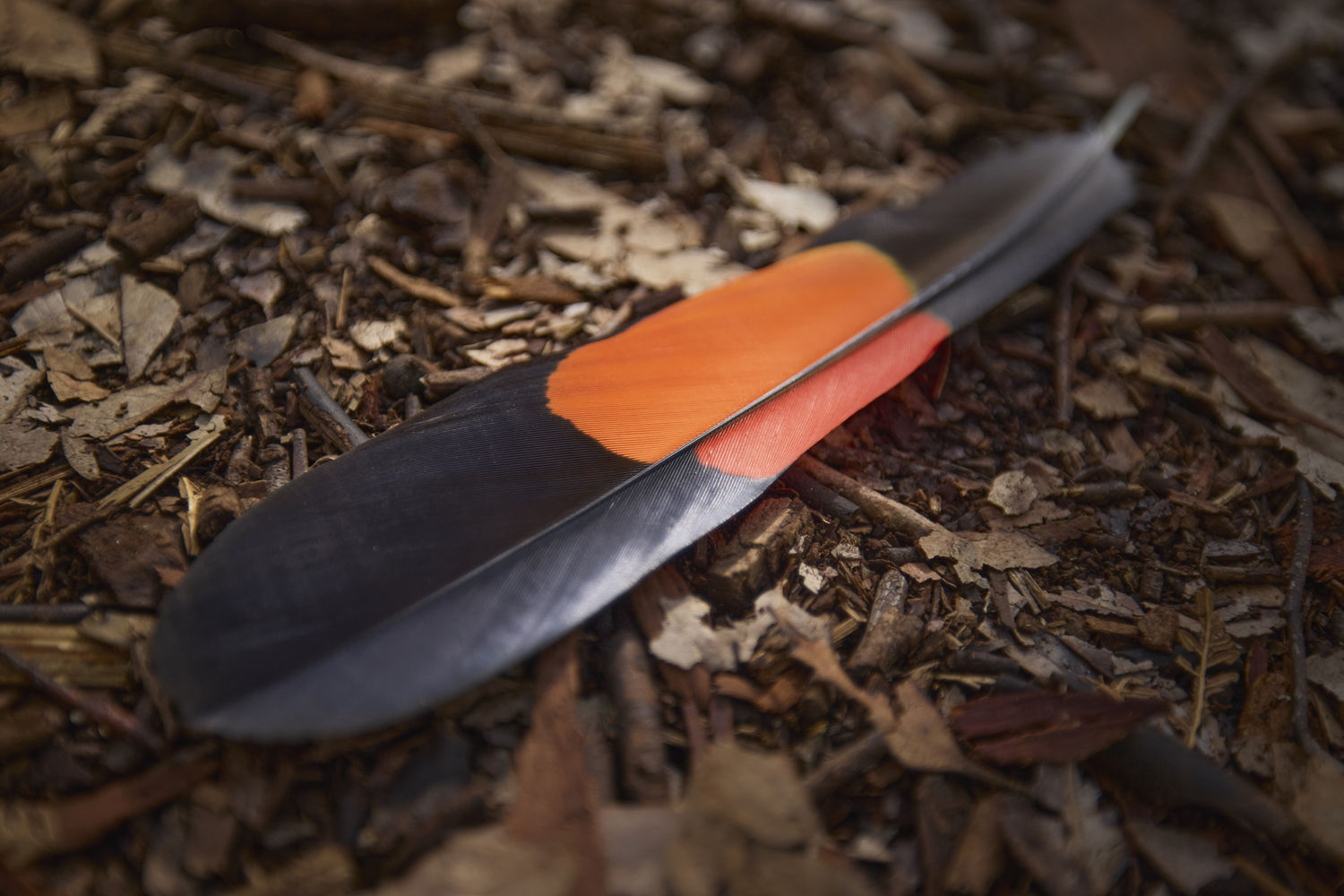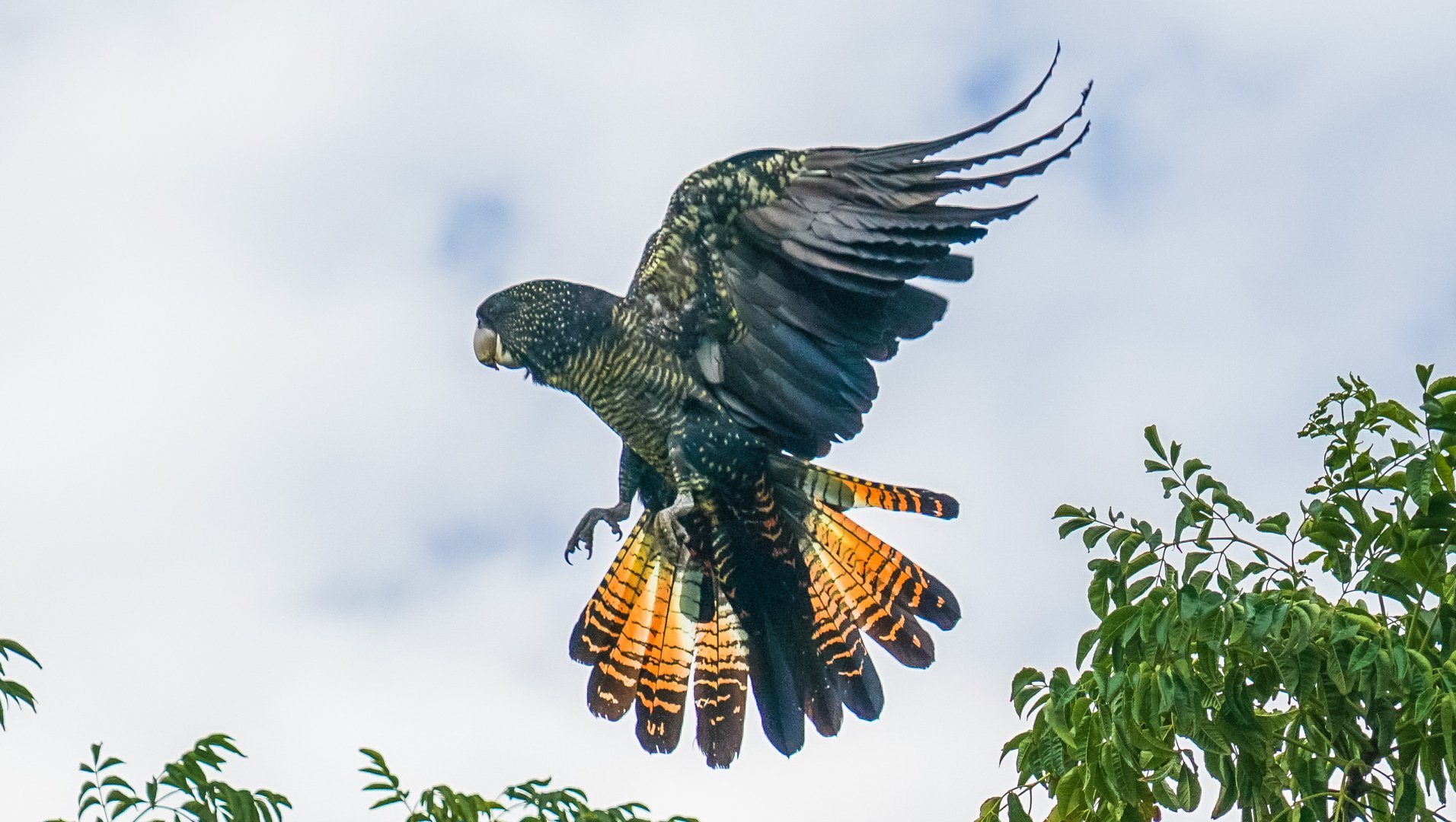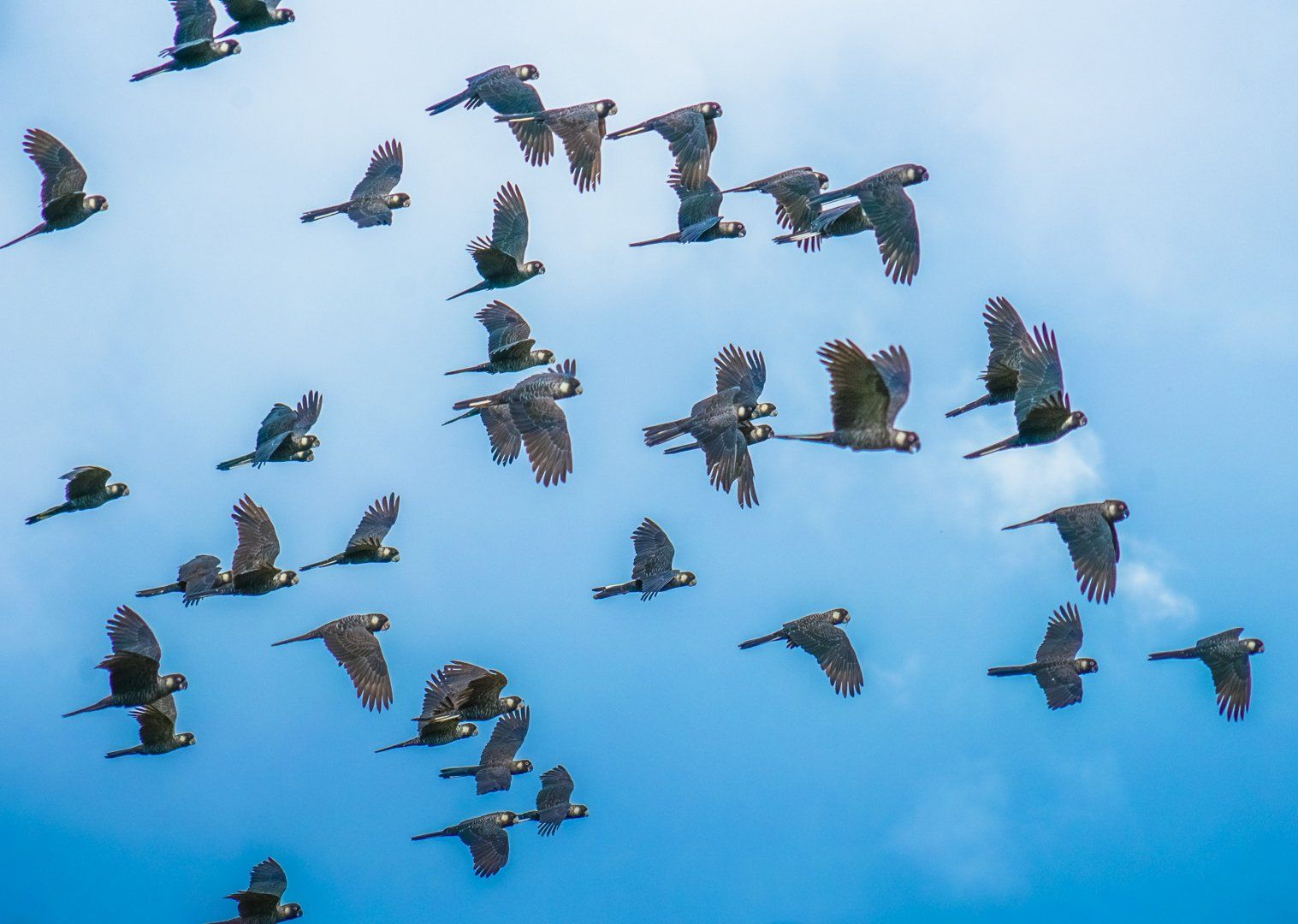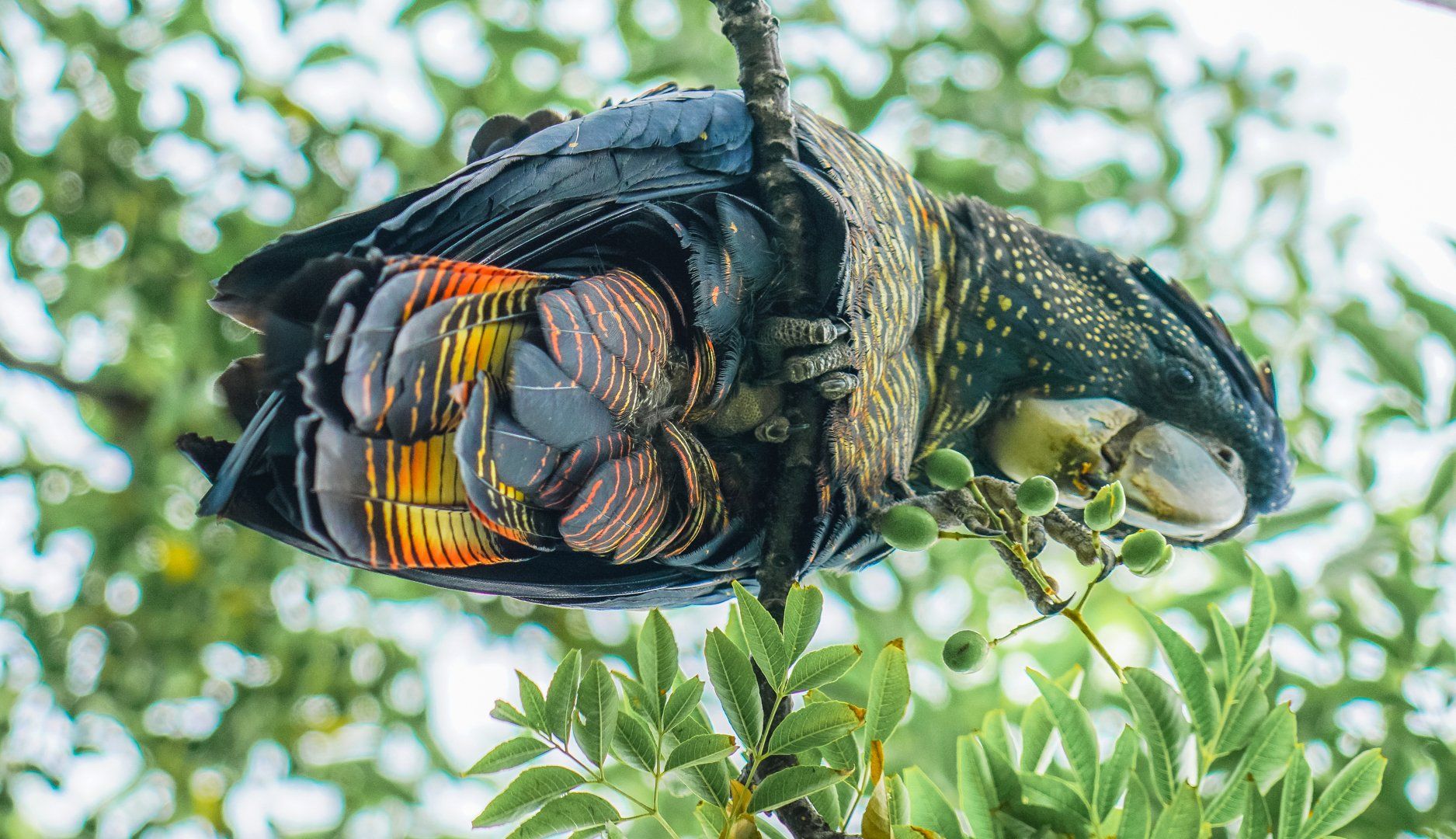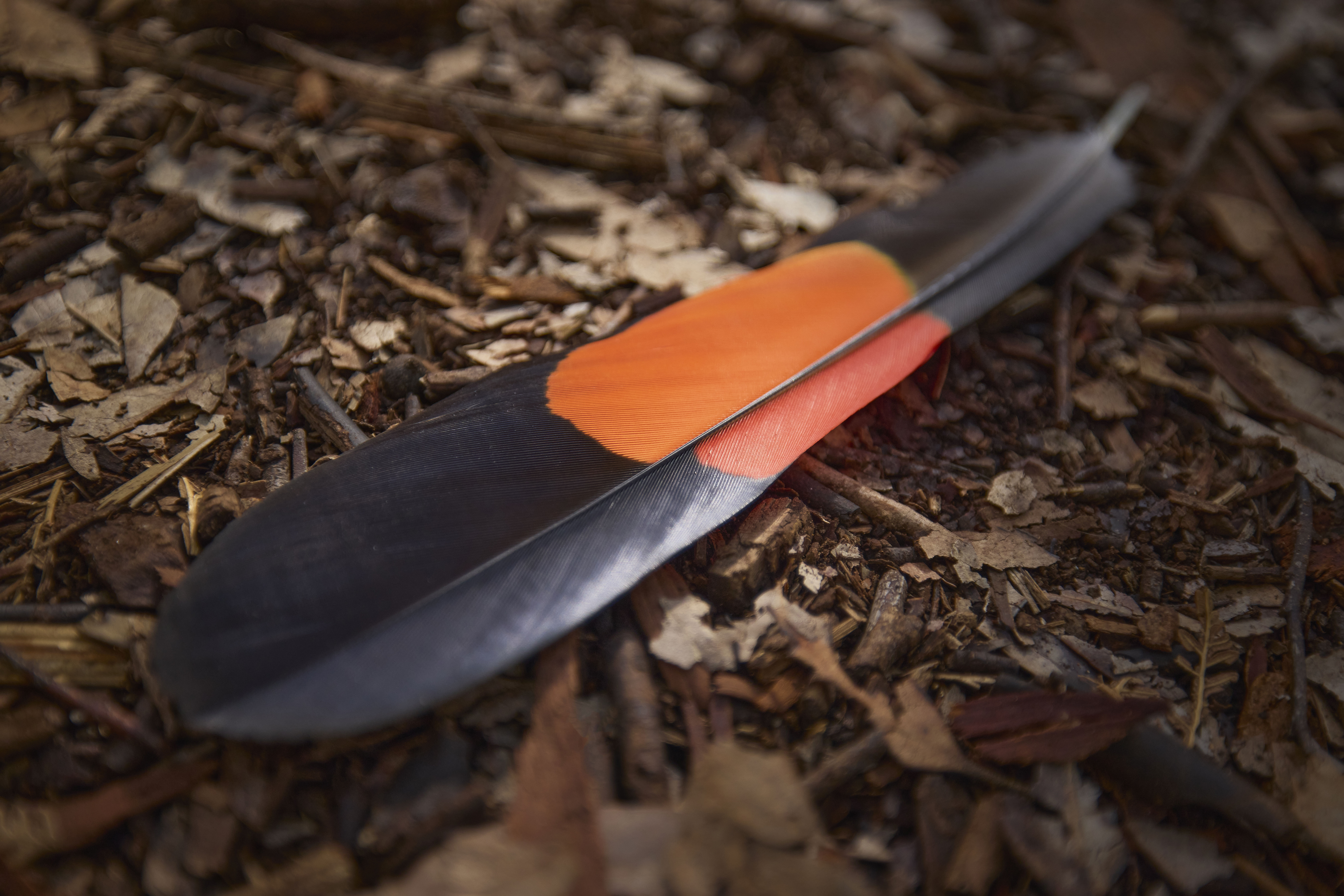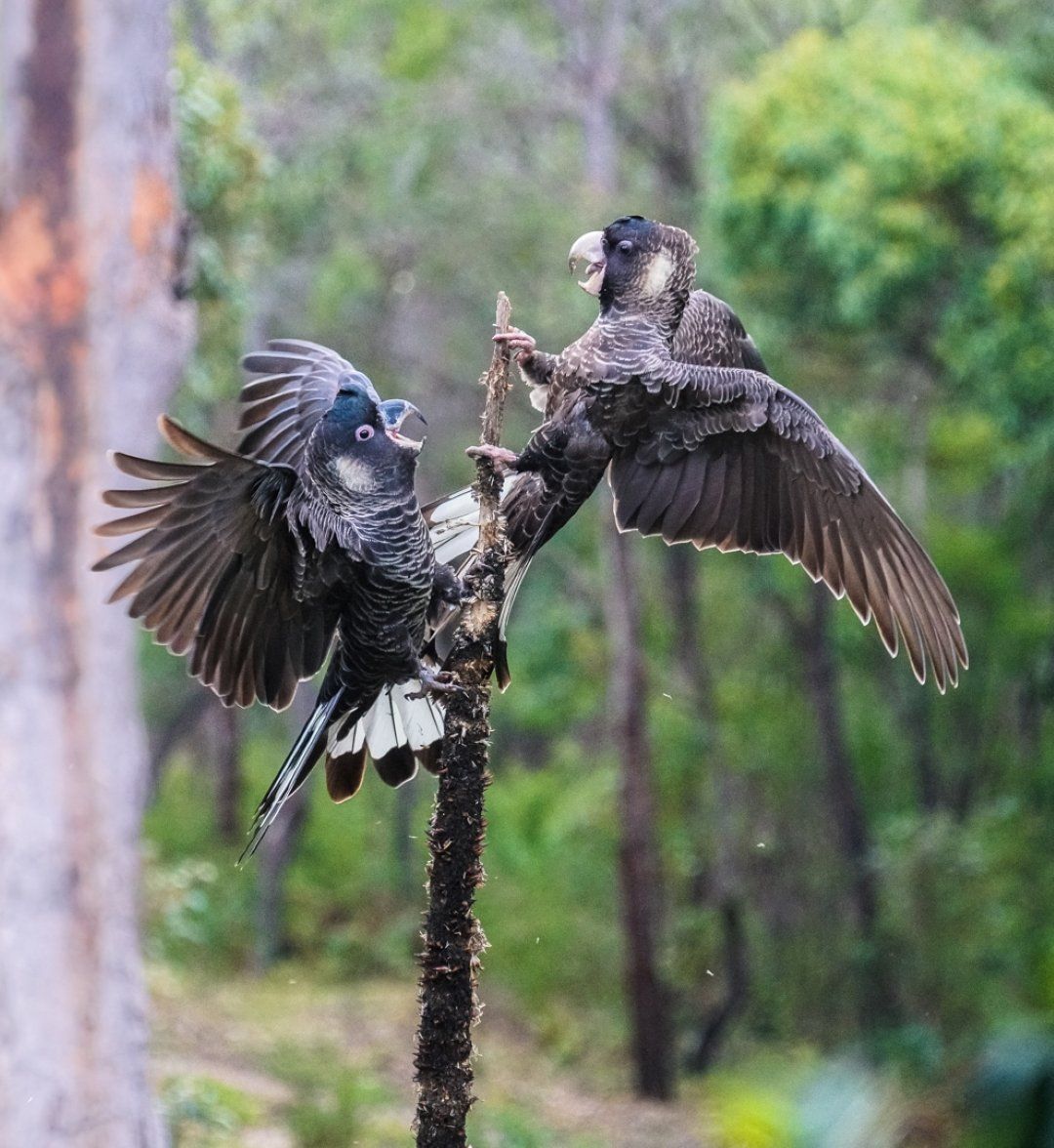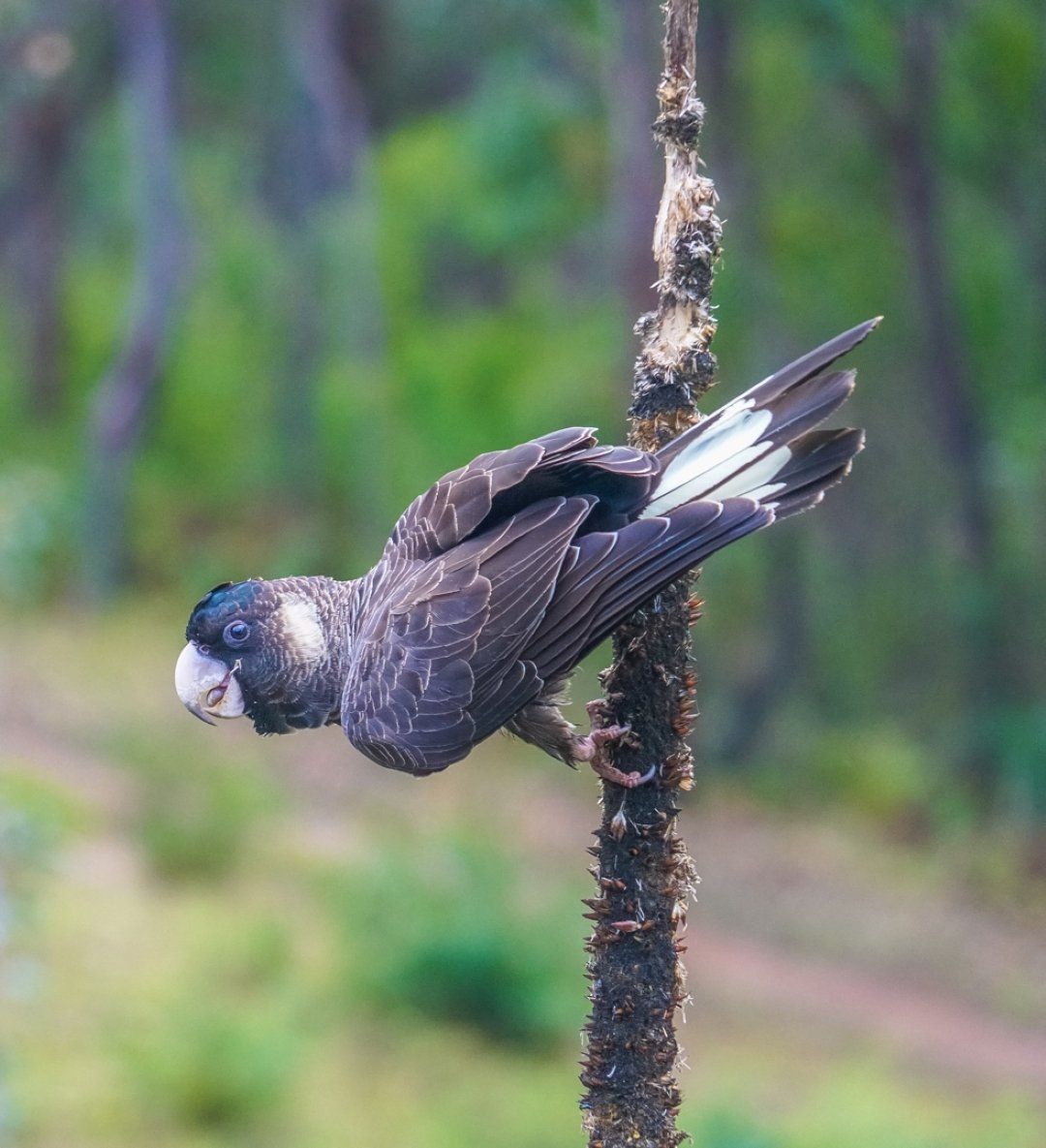Red-tailed black cockatoos’ favourite grub is the marri nut, which makes this a species inclined to forest dwelling. Jarrah, marri and karri forests are their most obvious stomping grounds. And while the keen-eyed driver will be sure to spot at least a few small flocks on a road trip from the Margaret River township to Nannup – flanked as the road is by national park – even small tree groves closer to regional towns can be prime spotting zones.
The square of bush in the Margaret River town between Clarke Road, Boodjidup Road and Railway Terrace can prove a hot spot. A walk along the trail in the A-class reserve of Nguraren Kalleep just north of town is an opportunity for a red-tailed interaction. As is a walk through the Carters Road trails.
The bushland around Gracetown is a frequent red-tailed black cockatoo feeding and nesting ground too, and the forest trails around Rosa Brook rarely disappoint bird enthusiasts.
Trails into bushland around the Augusta township are also favourite spotting zones for local birders: ‘I absolutely love them and seeing them in flock is one of the most stunning things,’ says Augusta local, Carolyn Tenardi, who walks daily in the bush behind the Augusta football oval and BMX park, a bit of reserve where the rare species congregate to chatter and feed. ‘In spring that bushland is a mass of wildflowers. And every day I see Carnaby’s and forest red-tails. They are treasures.’
